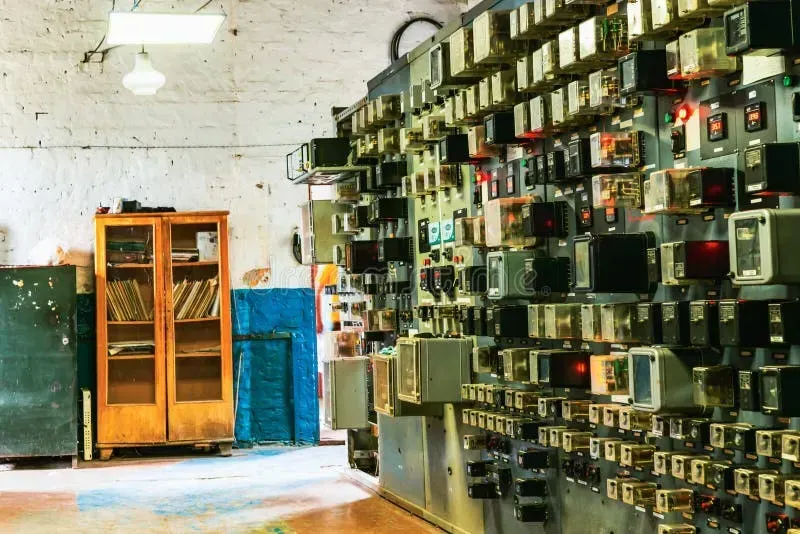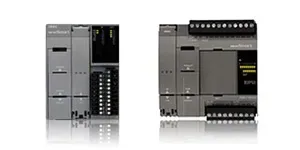The Evolution of Programmable Logic Controllers (PLCs): A Historical Perspective

From Relays to Smart Automation
The story of Programmable Logic Controllers (PLCs) is deeply intertwined with the rise of industrial automation. From their humble beginnings in the late 20th century to becoming the backbone of modern manufacturing, PLCs have revolutionized the way industries operate. This article dives into the history of PLCs, tracing their development, key milestones, and the technological advancements that have shaped their evolution.
The Birth of PLCs: A Revolution in Manufacturing
Before PLCs, manufacturing relied heavily on relay-based control systems, which were cumbersome, unreliable, and difficult to reconfigure. These systems required extensive wiring, making changes or updates both time-consuming and costly.
In 1968, a groundbreaking change occurred. General Motors (GM), seeking a more efficient and flexible control solution for their Hydra-Matic transmission factory, issued a request for a programmable controller to replace their relay systems. This initiative led to the creation of the first PLC by Bedford Associates, a Massachusetts-based engineering firm. Dubbed the Modicon 084, it marked the beginning of the PLC era.
Key Milestones in PLC Development
- 1968: The First PLC (Modicon 084)
- Designed by Dick Morley and his team at Bedford Associates.
- Eliminated the need for extensive relay wiring.
- Offered programmability and ease of reconfiguration.
- 1970s: Adoption Across Industries
- Industries beyond automotive began adopting PLCs for their flexibility and reliability.
- Key players like Allen-Bradley, Siemens, and GE entered the market, driving innovation.
- 1980s: Advancements in Software
- The introduction of ladder logic programming simplified the use of PLCs, making them accessible to a broader audience.
- Enhanced communication capabilities allowed integration with other industrial systems.
- 1990s: The Digital Revolution
- PLCs became more compact, powerful, and cost-effective.
- Emergence of Ethernet communication protocols enabled real-time monitoring and control.
- 2000s: Integration with IoT
- PLCs began incorporating features for smart manufacturing and connectivity.
- The rise of the Industrial Internet of Things (IIoT) brought advanced data analytics and remote monitoring capabilities.
Impact on Modern Manufacturing
The introduction of PLCs transformed manufacturing by:
- Increasing Efficiency: Automation reduced human error and production time.
- Enhancing Flexibility: Programmable systems allowed for quick adjustments to production lines.
- Improving Reliability: Rugged designs ensured operation in harsh industrial environments.
- Supporting Innovation: Integration with advanced technologies enabled more complex and precise control systems.
Challenges and Evolution
While PLCs have become indispensable, their journey hasn’t been without challenges:
- Competition from PCs and Microcontrollers: As technology advanced, alternatives like industrial PCs emerged, offering greater computational power.
- Cybersecurity Risks: The connectivity of modern PLCs introduced vulnerabilities to cyberattacks.
- Evolving Standards: Continuous updates in industrial protocols required manufacturers to adapt.
Despite these challenges, PLCs have adapted and thrived, solidifying their position in automation.
The Future of PLCs
As industries embrace Industry 4.0, PLCs are evolving to meet the demands of smart factories. Future trends include:
- Enhanced Connectivity: Integration with cloud platforms and edge computing.
- Artificial Intelligence: Incorporating AI for predictive maintenance and decision-making.
- Sustainability: Developing energy-efficient systems to reduce environmental impact.
Conclusion
From the first Modicon 084 to today’s advanced systems, PLCs have been at the forefront of industrial innovation. They have not only streamlined manufacturing processes but also paved the way for the digital transformation of industries. As technology continues to evolve, PLCs are poised to remain a cornerstone of automation, driving efficiency and innovation in the decades to come.
Other References
"The Origin Story of the PLC"
This article provides an in-depth look at the inception of PLCs, detailing the challenges and innovations that led to their development in the late 1960s.
"History and Applications of PLC"
This resource explores the evolution of PLCs, highlighting their applications across various industries and the technological advancements that have shaped their functionality.
Key Takeaways
Origins of PLCs
- PLCs were developed in response to General Motors' need for a flexible and efficient replacement for relay-based control systems in 1968.
- The Modicon 084, created by Bedford Associates, was the first PLC and marked the beginning of modern industrial automation.
Key Milestones in PLC Development
- 1970s: PLCs were adopted across industries beyond automotive, with companies like Allen-Bradley and Siemens entering the market.
- 1980s: Introduction of ladder logic programming simplified PLC usage and enhanced communication capabilities.
- 1990s: Advancements like Ethernet protocols made PLCs more compact and cost-effective while enabling real-time monitoring.
- 2000s: Integration with IoT brought smarter manufacturing, remote monitoring, and advanced data analytics to PLCs.
Impact on Manufacturing
- Increased efficiency by automating processes and reducing human error.
- Improved flexibility, enabling quick adjustments to production lines.
- Enhanced reliability with rugged designs suitable for harsh industrial conditions.
- Supported innovation through advanced technologies and precise control systems.
Challenges PLCs Have Faced
- Competition from industrial PCs and microcontrollers offering greater computational power.
- Cybersecurity vulnerabilities introduced by increased connectivity.
- Adapting to evolving industrial standards and protocols.
The Future of PLCs
- Greater integration with cloud platforms and edge computing.
- Incorporation of artificial intelligence for predictive maintenance and smarter decision-making.
- Focus on sustainability with energy-efficient designs to reduce environmental impact.
Legacy of PLCs
- From the Modicon 084 to today’s advanced systems, PLCs have driven industrial innovation, transforming manufacturing processes and setting the stage for future technological advancements.


